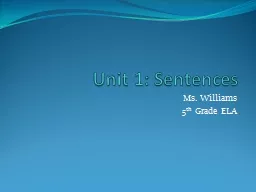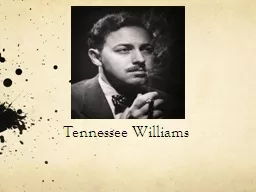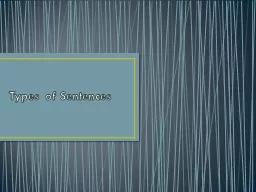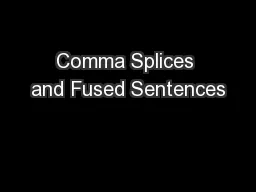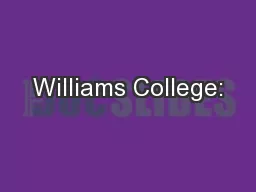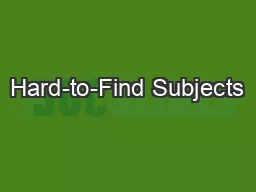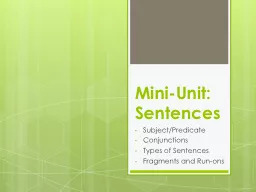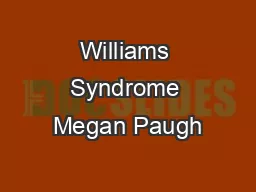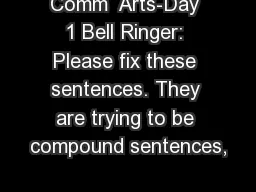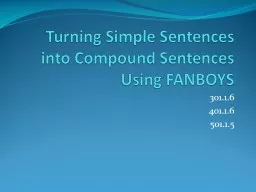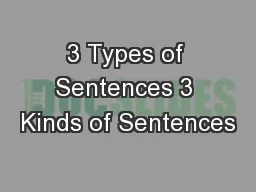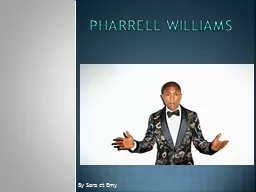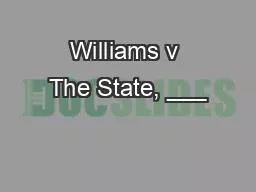PPT-Unit 1: Sentences Ms. Williams
Author : dudeja | Published Date : 2020-07-01
5 th Grade ELA Objective I CAN identify complete sentences and sentence fragments Guided Notes A sentence is a group of words that expresses a complete thought
Presentation Embed Code
Download Presentation
Download Presentation The PPT/PDF document "Unit 1: Sentences Ms. Williams" is the property of its rightful owner. Permission is granted to download and print the materials on this website for personal, non-commercial use only, and to display it on your personal computer provided you do not modify the materials and that you retain all copyright notices contained in the materials. By downloading content from our website, you accept the terms of this agreement.
Unit 1: Sentences Ms. Williams: Transcript
Download Rules Of Document
"Unit 1: Sentences Ms. Williams"The content belongs to its owner. You may download and print it for personal use, without modification, and keep all copyright notices. By downloading, you agree to these terms.
Related Documents

